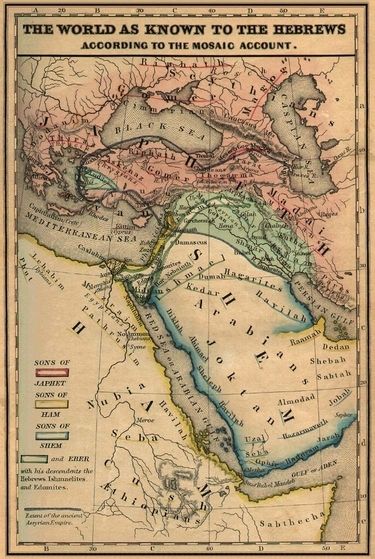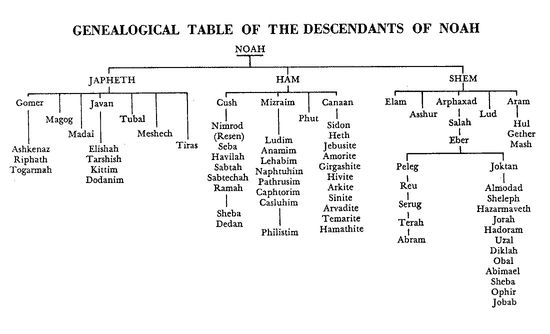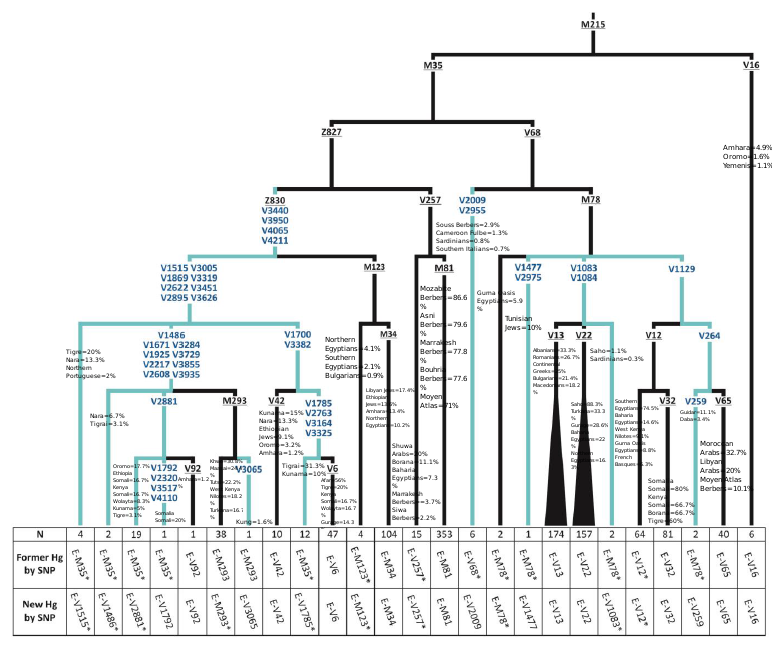jalaaludin5 wrote:if our historical river streams towards a great civilization or the untouchable of India, it will not change or effect in anyway that most crucial and unshakable belief
If by this you are alluding to the paternal haplogroup T that many Somalis carry, I should point out that that clade's highest concentration today is found in the part of the Somali territories that was occupied by the medieval Adal Sultanate (i.e. Ogaden, Djibouti and Woqooyi). However, since the autosomal DNA of haplogroup T-carrying Somalis is essentially the same as that of haplogroup E1b1b-carrying Somalis, it appears that these haplogroup frequencies in the former Adal area were in the recent past artificially inflated through what is known as a population bottleneck. A population bottleneck is basically when a portion of a population dies or is killed off through natural disasters, war, or some other calamity. In this case, many E1b1b-carrying Somalis were killed during the Adal Sultanate's medieval Futuh al-Habash or conquest of Abyssinia. This left behind a proportionately higher number of haplogroup T carriers in this geographical area compared to the general Somali population, but their overall DNA remained the same.
By the way, I actually agree with you that DNA can be more of a hindrance than a useful tool if not properly understood. Haplogroups are pretty straightforward since they are ascertained through actual examination of DNA. It is the so-called biogeographical analysis or BGA testing/admixture testing that is speculative at best since it, by contrast, is entirely based on probability. That is, BGA testing estimates where or in which geographical area given stretches of DNA (known as SNPs) likely originated based on which reference populations today carry those SNPs at highest frequencies. This is problematic for a number of reasons, some quite obvious:
- BGA testing is entirely dependent on the quality of the modern reference populations that the SNPs are compared against. For example, if a modern reference population with multiple ancestries is included in the analysis (like, say, the Maasai, who are Nilotes with some Cushitic influence), the SNPs could theoretically be most closely associated with any of that mixed reference population's various ancestries (in this case, they could be associated with either the early Nilotes or the early Cushites).
- Where a reference population resides today is not necessarily where it resided in the past.
- Just because a reference population today has the highest frequencies of a particular SNP does not necessarily mean it always did. For one thing, many ancient populations have died off (early Cushitic populations in particular) or gone through population bottlenecks, and they easily could have had higher frequencies of that SNP than any modern reference population.
- Just because a reference population today has the highest frequencies of a particular SNP does not necessarily mean that that SNP actually originated with that reference population. This SNP could have been passed on to that reference population's ancestors by interbreeding with an unrelated, now extinct population. Through linguistics and haplogroup analysis, we know for a fact that such contacts happened many times in the past and over a wide area between now extinct Cushitic groups and early Nilotic/Bantu populations.
- Certain modern populations have high frequencies of private alleles, which are genetic variants that are only found today in that population. These are quite common among modern ethnic Somalis, who have among the most private alleles in Northeast Africa. In other words, many SNPs for Somali individuals cannot be matched to any modern reference population. They are therefore not factored into the biogeographical analysis, which in turn gives a misleading estimate as to where most of those Somali individuals' overall SNPs truly cluster.
In short, haplogroups are useful. Biogeographical analysis/BGA testing/admixture testing, on the other hand, is only reliable insofar as it can give us a rough idea what ancestral component possibly defines a given population, but not at what relative frequencies (see
this for more). In our case, it suggests that ethnic Somalis and other Afro-Asiatic/Hamitic-Semitic populations in Northeast Africa are defined by some old ancestral component (called the “Ethio-Somali” component) that likely defined the ancient Puntites and their close relatives the ancient Egyptians as well. This can ultimately only be confirmed by extracting DNA from skeletons belonging to the early Cushites and other Afro-Asiatic peoples in the region, analyzing that ancient DNA, and then comparing it against that of their modern descendants and other populations.
jalaaludin5 wrote:my Muslim identity is the only thing that can never come under question
Sax walaal.

By the way, I know this is a bit late, but Eid Mubarak to you and yours.

Since most continents have a ancient Greek etymology.










